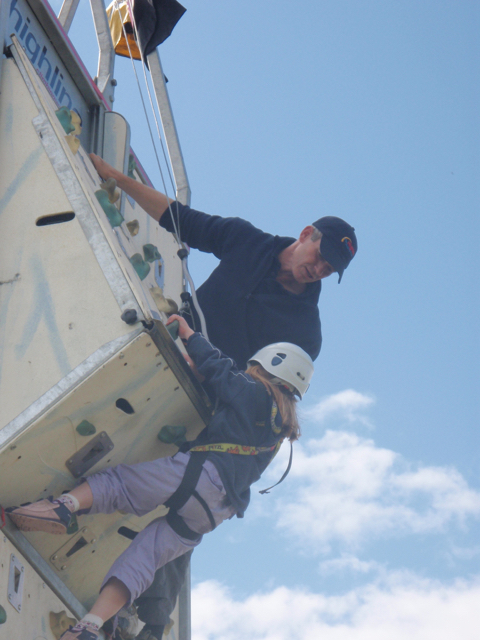How do you train for climbing walls?
If you are joining us for mobile climbing wall hire, this does not apply because you will be with an instructor and secured using ropes. But if you are interested in continuing climbing, then there is nothing wrong with being prepared.

Why should you train for a climbing wall?
Once you are no longer climbing with assistance it is essential to consider training. As a regular climber, you will find that training is vital for several reasons; these include;
- Avoiding injury
- Improving performance
- Increasing enjoyment
- Climbing for longer
How do I start training for climbing?
The best way to start training for climbing is with bodyweight exercises. To climb, you need good full-body fitness, mainly because you use your legs and upper body. When climbing, it is important to remember to focus on your legs rather than your upper body because you will tire much more quickly—work on developing your chest, shoulders and back, as well as your legs and core.
What exercises can I do to improve my climbing strength?
Exercises which help you to develop your Strength and functional fitness will be the ones to focus on. Here is a selection of great strength exercises.
Squats: Start with only body weight as you progress in the following weeks; consider a weight plate or barbell.
Lunges: Again, start with only your body weight; you can use variations to develop your leg muscles. With a front lunge and a back lunge, the next step is weighted versions of this exercise.
Press ups: First, you can press up from your knees. After this, lean further forward. It adds intensity but keeps you stable. Next, you can move onto toes, and once confident with regular press-ups, you can change to walkout press-ups where you move your arms out one way, and then your other arm follows like you are moving sideways. Doing this exercise puts the shoulders under tension.
Pull-ups: You could start with bicep curls for a few weeks before moving to pull-ups and warming into them rather than going in cold. If your biceps are not used to body weight, you can tear them.
Mountain climbers: A great exercise because your shoulders are under tension as you are in the press-up position, and then you are raising your knees, almost running. Increase the length of time and intensity as you become stronger.
Planks: Who likes a plank? Possibly cross-fitters, but few others. However, the plank is a useful exercise to increase your core strength. They work well alongside sit-ups.
Lat crunches: Due to the nature of climbing on commercial walls, a great exercise to add to your core is the lat crunch. It strengthens the side muscles required when you extend your arms during climbing.
“Climb if you will, but remember that courage and Strength are nought without prudence and that a momentary negligence may destroy the happiness of a lifetime. Do nothing in haste; look well to each step; and from the beginning think what may be the end.” —Edward Whymper.
As Edward Whymper states here, enjoy your passion, take it seriously and train well, Strength is nothing without being careful. The same can be said when training, do not expect to be an effective climber overnight. This can take months of training to keep improving your suppleness, Strength and skills on the climbing wall.
What equipment can you use to help with training?
Pegboards: They are fantastic tools to improve bodyweight grip strength, and climbers often favour these over many other exercises.
Grip strengtheners: Weight training helps as you grip the weights, but other tools should include Grip Strengtheners. These come is various weights.
Bouldering walls: Using bouldering walls is a great training aid for grip strength and getting used to the wall. We often hire bouldering walls for Schools and clubs because they need little supervision and no ropes, you can also have more participants on the wall at any one time.
This type of training equipment can easily be purchased from companies like Mirafit.
How do I avoid injuries when training for climbing?
Like marathon training, you must build up to it. We recommend starting the exercises above and then, once you feel stronger, moving on to the intermediate training by making the exercises more challenging. Adding weights, training for longer, and extending the exercise, all of these techniques will help you to increase your functional and general fitness. Training like this increases muscle density and fibrous Strength. Also, it stabilises muscle development around joints and tendons, which commonly inflame, pull or become painful if you do not use training when climbing.
What about if you are looking to build or buy a commercial climbing wall?
Well, councils, schools and Scouts & Guide groups often hire our Climbing Walls for trial periods to see if the area has an appetite for climbing. Hiring a climbing wall can give you an idea of the space and interest. It is an enjoyable experience for teams thinking of investing and is an effective way to trail before an expensive purchase.
We hope that you found this article helpful. If you would like more information on any of the activities that we provide, get in touch by using the Contact form.
